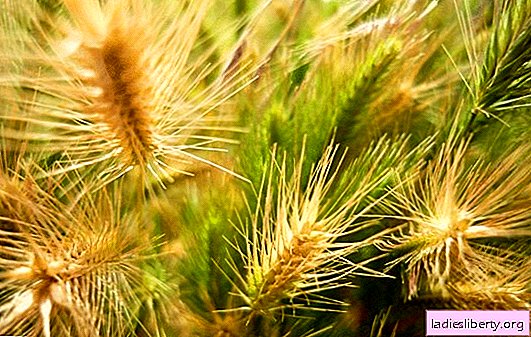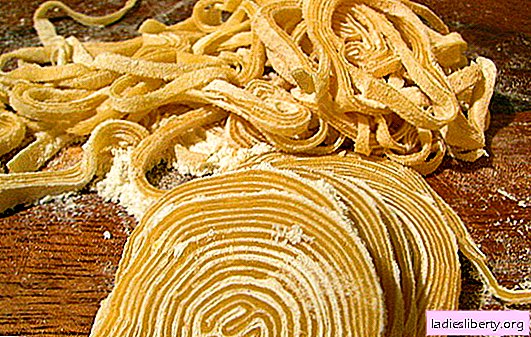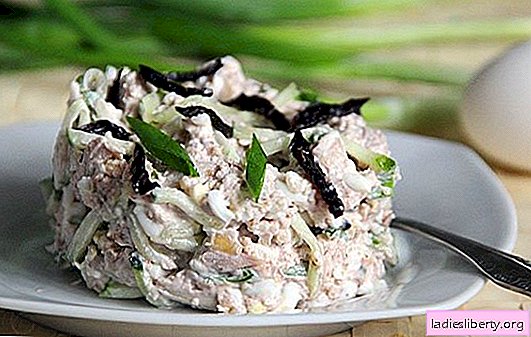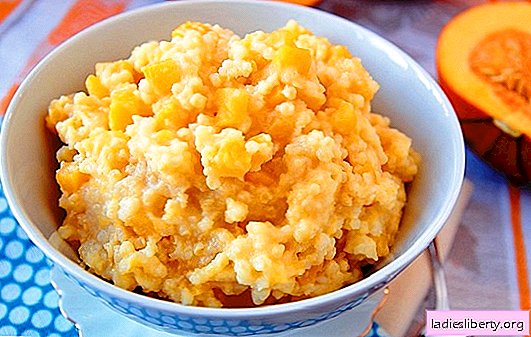
To maintain health, as well as harmony and youth, it is useful to include in the diet such a not so popular product today as barley. And the usual diet will not lose at all from this - after all, barley, in all its variety of forms, is very tasty.
What are the benefits of barley in general?
The cereal culture of barley has been cultivated by man for over 12 millennia and all this time has been appreciated not only for productivity and unpretentiousness, ability to saturate, breadth of methods of consumption and decent taste, but also for health benefits.
For a full story about the properties of barley, it is necessary to pay attention to the features of individual products made from it, as well as the features of the properties of barley in general, which remain unchanged regardless of what the cereal turns into.
If we compare the protein (amino acids) of cereals, then barley will surpass wheat and corn, however, again, in comparison with them, it has less starch.
In vegetarian cuisine, barley is appreciated for its ability to make up for the deficiency of the most important substances - vitamins (retinol, tocopherol, vitamins K, B1 and D, folic acid) and minerals (copper, potassium, magnesium, phosphorus, sodium, zinc, silicon, selenium, chromium).
Also, the periodic use of barley in any form will be useful for:
· Slowing down the aging process (including protecting cells from the damaging effects of defective molecules - free radicals);
· Withdrawal of excess fluid from the body;
· Daily feeling of vigor;
· Normalization of the work of the spleen (the body responsible for hematopoiesis and good immunity).
Qualities underlying the benefits of barley in the form of cereals
Barley groats are divided into three main groups:
· Pearl barley (pearl barley) is a whole grain, peeled from the top layer (bran);
· Dutch is obtained from more carefully refined barley, its grains are round, and dishes from this cereal are more refined and cook faster;
· Barley groats differs from pearl barley in that they are finely divided (chopped).
It is important to note that in cereals that have not undergone thorough processing (such as Dutch women), a content of less than 1% of undercooking is allowed, that is, not removed residues of the upper shell, containing, by the way, many useful elements (including minerals) in high concentration.
About the taste of cereals from barley, we can say that it is neutral, but original, in it you can find a shade as if nutty.
Barley cereals are used to make cereals (in milk, as well as with meat, vegetables), soups, add to minced meat for meatballs and stuffing for stuffing poultry.
Of the other cereals, barley is best combined with rice.
Barley porridge can often be found on the menu of fasting days, it is also suitable for mono-diets.
Porridge is suitable even for fans of sports and intensive fitness exercises - thanks to the already mentioned high-quality amino acids, the body does not have to burn protein reserves that are already deposited in muscle tissue during physical exertion.
Any dish from these cereals thoroughly and permanently saturates and even reduces appetite (however, the latter can be changed by adding spices and spices to these dishes).
The energy value of dry cereal from barley is about 300 kcal per 100 g, but if the porridge is cooked, this figure will decrease to 80-100 kcal per 100 g of the dish, provided that it is cooked in water and is not seasoned with sugar or cream oil.
Plus - slow carbohydrates, the quality is not inferior even to pasta (in Italy, by the way, a variation on the theme of risotto - perlotto is prepared from pearl barley).
Being a source of insoluble and soluble dietary fiber, barley in the form of cereals significantly improves digestion:
· Strengthens the walls of the stomach;
· Relieves inflammatory processes affecting the mucous membranes of the gastrointestinal tract and promotes their regeneration;
· Promotes the formation of beneficial microflora in the intestine.
Features of the benefits of barley processed into various products
Compared with cereals, a higher percentage of nutrients is preserved in barley flour, so it can also be used in diet food, but when kneading a dough for any baking, it needs to be mixed with a certain amount of wheat flour.
It is believed that during the assimilation of fresh pastries from yeast dough from barley flour, fermentation processes that naturally occur in the digestive tract have a less destructive (overwhelming) effect on it.
Decoctions and infusions are the main remedy from barley grains, known to traditional medicine of the past.
And although the attitude to most of its recipes in modern science is known, skeptical, even the well-known nutritionists have recognized the individual properties of these drinks, so using barley as such is possible for the following:
· Treatment of respiratory diseases (including bronchitis, pneumonia, pharyngitis, laryngitis and even tuberculosis);
· Relief of ARI and flu (as an antipyretic and for sore throat);
· Normalization of the heart (with tachycardia and arrhythmias) and prevention of heart attack;
· An increase in the amount of milk during breastfeeding (especially if a woman takes a decoction of barley with the addition of dill seeds).
Flour from germinated and fried barley grains (talcan), like ordinary barley flour and all cereals from this cereal, has a pronounced property to absorb and remove from the body non-digestible, harmful and toxic substances.
Since talcan does not require prolonged heat treatment, it is convenient to add flour to the second and first courses, sauces, cereals, pancake dough.
Kissel from talakan is indicated for stomach diseases as a means of relieving irritation and inflammation of the mucous membranes, due to its enveloping, soothing and regenerative properties.
In Asian cuisine, the sprouted grain itself is also not actively consumed, but its young sprouts (which have not yet become green grass), which are distinguished by the highest (comparing all stages of the plant's life) content of micro and macro elements and the ability to renew body tissues at the cellular level.
Barley malt is not only beer, but also homemade kvass and various breads.
To obtain it, the grains are soaked (steamed), then dried and ground.
Of the beneficial properties of malt, complementing the quality of barley as a whole, it is worth noting its effectiveness in the treatment of inflammatory diseases of the genitourinary system (including facilitating the removal of sand formed and for men - the prevention of prostatitis)
And the fact that it prevents damage (destruction) of muscle tissue during intense physical exertion.
Can there be harm from barley
A fair amount of gluten gives cereals and flour from barley harm during exacerbation of diseases of the gastrointestinal tract (and its fiber is also not useful in these cases).
Also, an excess of gluten (gluten) in itself can cause gastrointestinal disorders, including:
Flatulence;
Diarrhea
· Poor stomach perception of fatty or spicy (spicy) food;
· Reduced production of gastric juice;
Discomfort and pain in the intestines.
Separately, it is worth mentioning the potential harm of barley processed into malt, the use of which should be discarded in the following cases:
· Inflammatory diseases of the pancreas;
· Inflammatory processes in the gallbladder;
Peptic ulcer of the stomach and duodenum.











